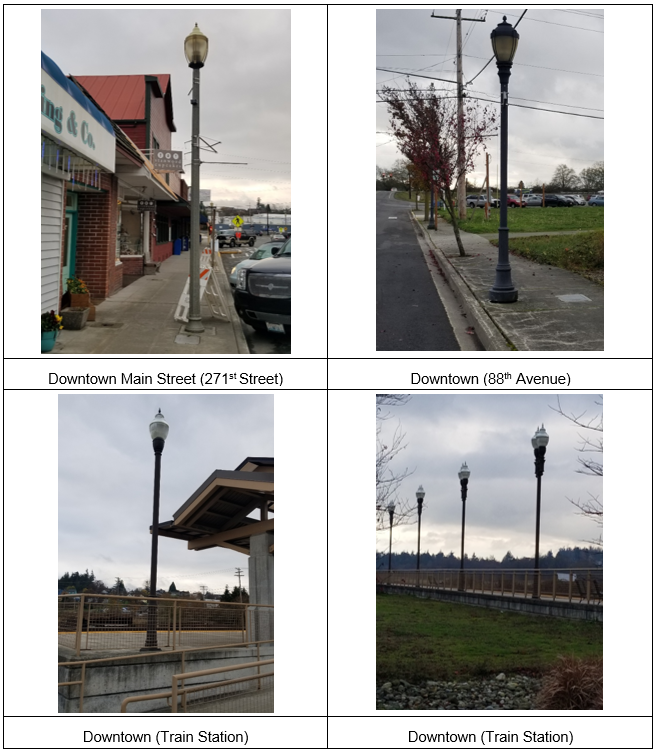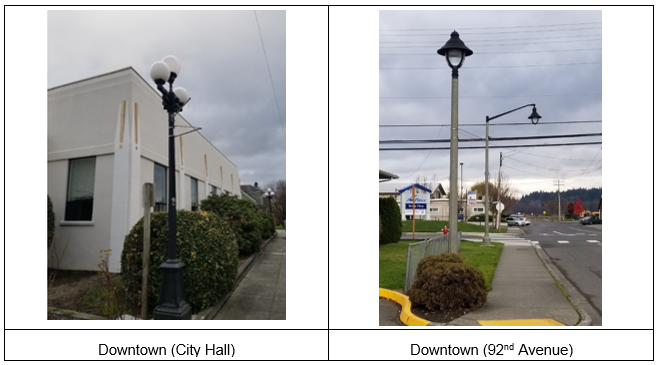17.210.120 Small cell facilities in undergrounded areas or design zones.
(1) Replacement poles over 45 feet in height and new street lights for small cell facilities to be constructed in any undergrounded area or design zone are permitted only when the applicant establishes that:
(a) The small cell facility cannot be located on an electrical transmission tower or on a site outside of the public right-of-way such as a public park, public property, or in or on a nonresidential use in a residential zone whether by roof or panel-mount or separate structure; and
(b) The proposed facility complies with an approved stealth installation plan as described in this section for an undergrounded area or design zone; and
(c) The facilities shall comply with critical areas requirements and SEPA, if applicable; and
(d) The applicant shall enter into an agreement with the owner of any new or replacement utility pole and/or street light within the public right-of-way and provide an executed copy of the agreement to the city prior to right-of-way permit issuance.
(2) Stealth Installation Plan Required. Applications for proposed installations in underground areas and design zones which deviate from existing city design standards (or if the city has not created a design standard for that particular area) shall be required to submit a stealth installation plan. Such plan shall include the design of the screening, fencing or other concealment technology for a base station, tower, utility pole, or equipment structure, and all related transmission equipment or facilities associated with the proposed wireless facility, including but not limited to fiber and power connections.
(a) Purpose of Stealth Installation Plan, Generally. Stealth installation plans should seek to minimize the visual obtrusiveness of installations using methods including, but not limited to, integrating the installation with architectural features or building design components, utilization of coverings or concealment devices of similar material, color and texture – or the appearance thereof – as the surface against which the installation will be seen or on which it will be installed.
(b) Other stealth approaches may include, but not be limited to, use of architectural concealment products, fencing or screening materials, and, where appropriate, landscape design, or any other camouflage strategies appropriate for the type of installation. Additionally, the use of a stealth support or concealment device, such as a clock tower, steeple, flagpole, tree, street sign, or other applicable concealment structure, may be approved.
(c) The director shall apply this section, as well as all design requirements applicable in the underground area or design zone in which an installation is proposed.
(d) Review of Stealth Installation Plan for Nonsubstantial Change Co-locations. Where a proposed co-location does not constitute a substantial change, a stealth installation plan shall be subject to ministerial review to ensure the proposed co-location does not defeat the concealment features approved as part of the initial installation at that location.
(e) Review of Stealth Installation Plan for Initial Installations and Substantial Change Co-locations. For initial installations and substantial change co-locations in underground areas and design zones, the director shall conduct an administrative review of stealth installation plans for compliance with this section and all applicable city design guidelines.
(3) Replacement Utility Pole – Street Lighting. With the director’s approval, a replacement utility pole or a request for a new utility pole may be permitted in the form of a new street light. The design of the street light shall be consistent with the existing street lights, subject to the director’s approval. All equipment and cabling shall be internal to the replacement street lighting standard. See examples below.


(4) Undergrounded Areas. It is the stated policy of the city that all utilities shall be underground in areas that are currently undergrounded. No new utility poles shall be erected in undergrounded areas. The applicant may request to install a new street light as provided in applicable city code.
(5) Franchise and Small Cell Deployment Facility Approvals and Processes. Approval of a franchise, right-of-way permit and/or other approval referenced in this chapter are conditioned on the following requirements:
(a) Satisfy applicable design requirements, including, but not limited to, noise and light regulations.
(b) Comply with adopted design and concealment standards, applicable to replacement utility poles and new utility poles in a design zone or undergrounded areas.
(c) Obtain the written approval of the owner of any utility pole for the installation of its facilities on such utility pole. Unless specifically provided for in a franchise agreement, approval of a franchise does not authorize attachment to city-owned utility poles or other structures.
(d) Comply with all city construction standards and state and federal codes and standards when operating in the right-of-way and obtain a required permit to enter the right-of-way.
(e) A right-of-way permit for small cell deployment which includes a facility not exempt from SEPA review shall be processed in the provisions of the applicable city code. (Ord. 1469 § 6 (Att. E), 2019).